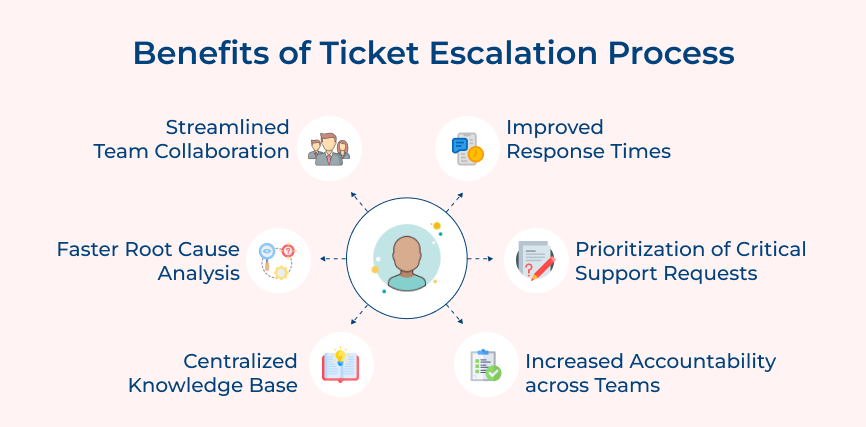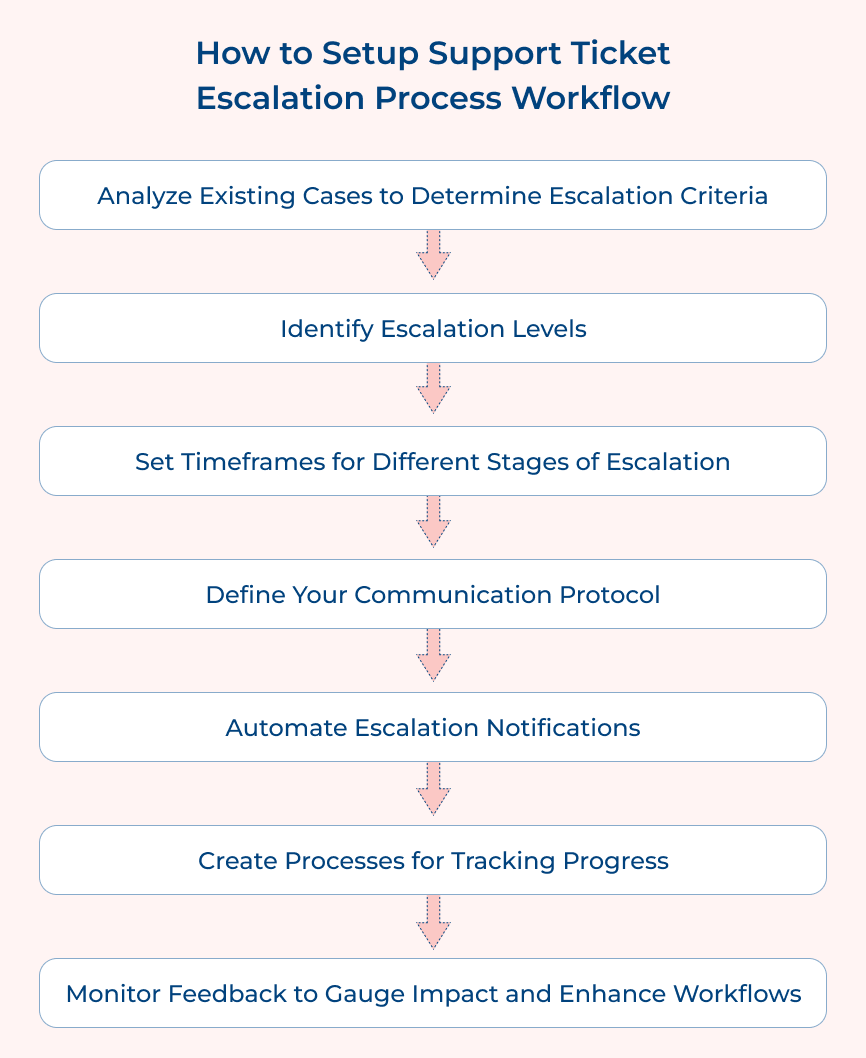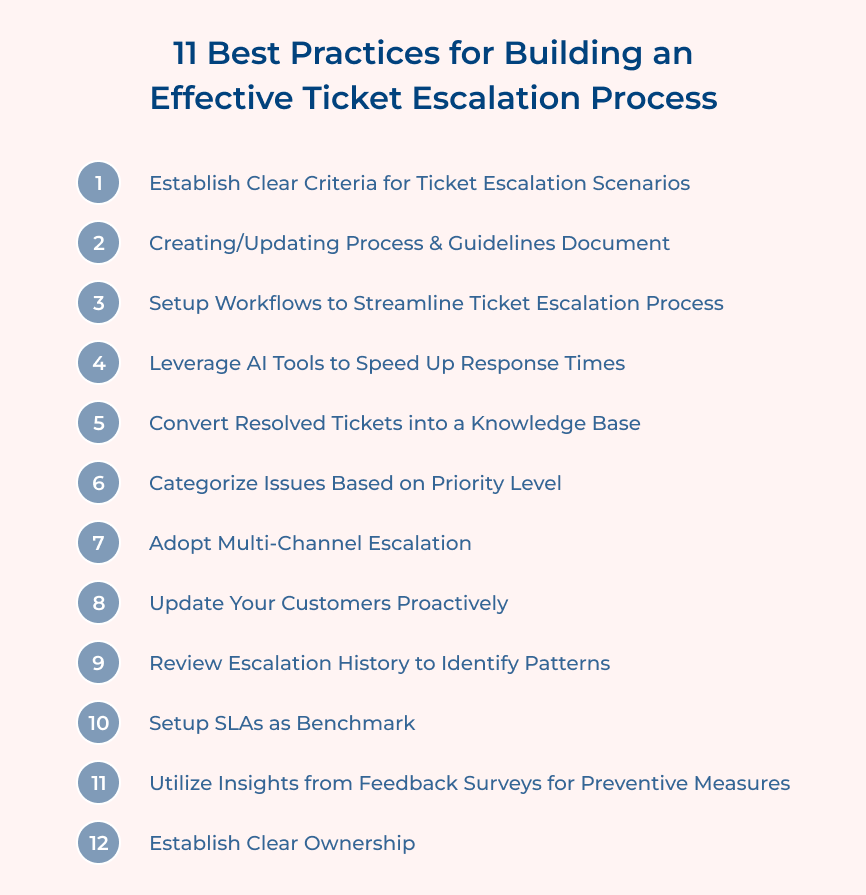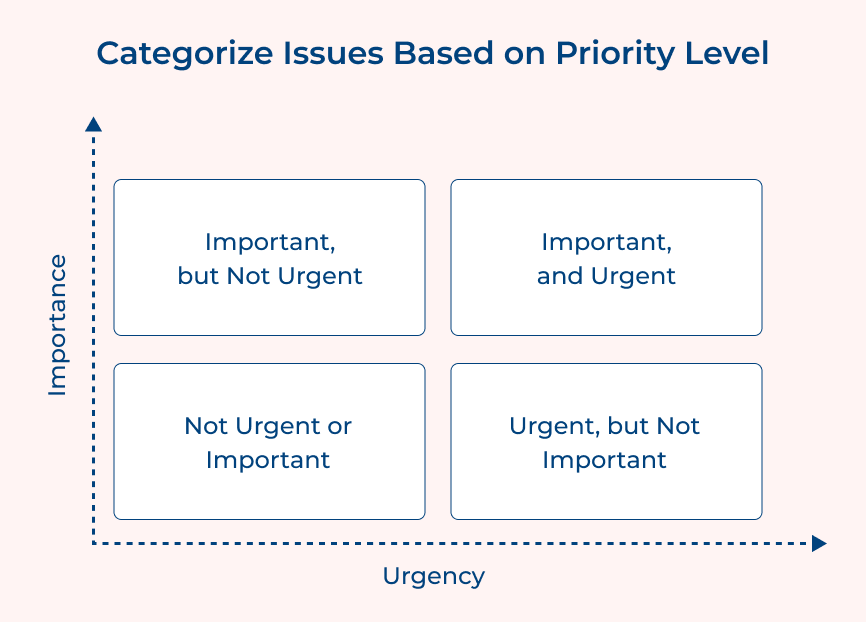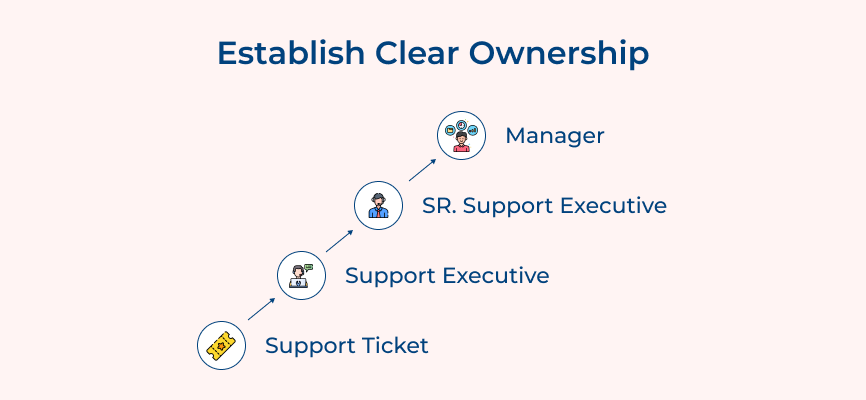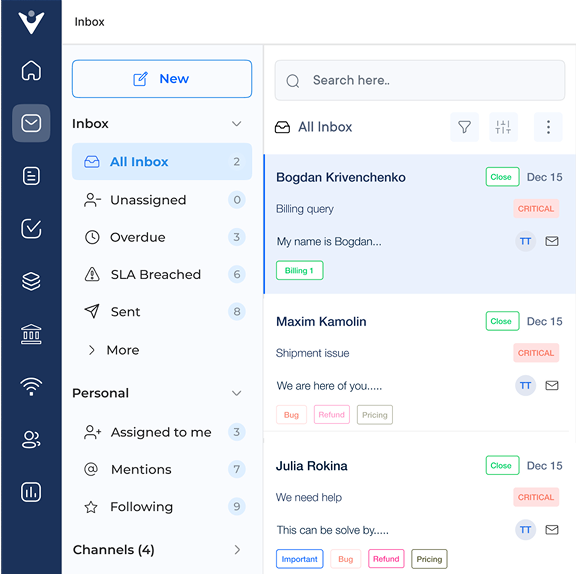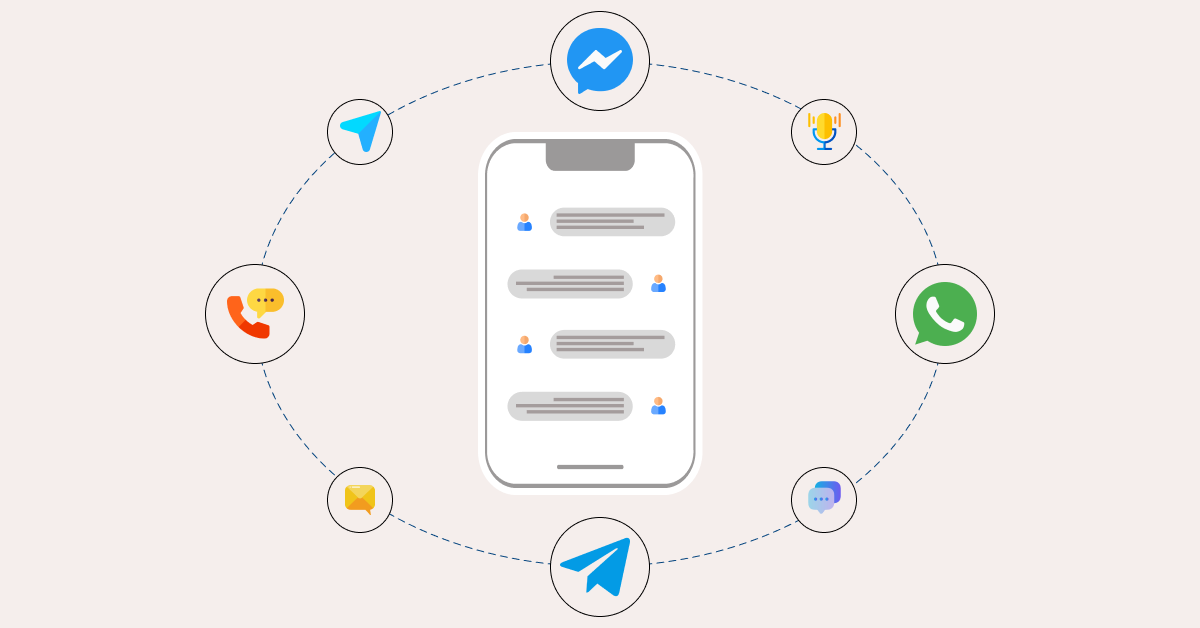1. Analyze Existing Cases To Determine Escalation Criteria
Consider the customer service resolution trends and analyze existing cases to determine what criteria might be used to trigger an escalation event in the future. Once you’ve established the common customer issues that need special attention or require assistance from someone with more expertise, those criteria will form the basis of your ticket escalation workflow system.
Identifying patterns and common challenges enables you to establish well-defined criteria for triggering ticket escalation. Consider factors such as the complexity of the issue, customer urgency, and specific service level agreements (SLAs).
Actionable Tips:
- Leverage data analytics tools to spot trends and patterns in customer support tickets.
- Collaborate with cross-functional teams to gain diverse perspectives on escalation criteria.
- Document the escalation criteria clearly and share them with all relevant stakeholders.
2. Identify Escalation Levels
Once you’ve identified the types of problems that require extra attention, set up different tiers or levels of service desk agents within your organization who can handle escalating issues. The agents should be experienced and trained on how to handle tougher stakes that come with escalated tickets.
As you set up escalation levels, carefully assess the skills and expertise required at each tier. Designate experienced agents and subject matter experts for higher-level escalations. Make sure to provide comprehensive training to the agents, empowering them to handle complex issues confidently.
Actionable Tips:
- Establish a clear escalation hierarchy with well-defined roles and responsibilities.
- Conduct regular training sessions to equip agents with the knowledge and skills needed for escalations.
- Cultivate a collaborative environment that encourages cooperation among teams during escalations.
3. Set Timeframes For Different Stages Of Escalation
The best way to keep track of issue resolution is by using timeframes for each stage of escalation in your policy. It’s important to have a realistic understanding of when an issue is considered solved so you don’t have lingering unresolved tickets clogging up your system.
Implementing timeframes for each stage of the escalation process is crucial for maintaining efficiency and meeting customer expectations. Define realistic time limits for each escalation level to avoid delays and ensure prompt resolution of customer issues.
Actionable Tips:
- Utilize automated reminders and notifications to keep agents aware of escalation timeframes.
- Implement a ticket tracking system to monitor the time spent on each escalated ticket.
- Conduct regular reviews of timeframes to identify bottlenecks and streamline the escalation process.
4. Define Your Communication Protocol
Communication between teams is key for efficient escalation systems, especially if multiple people are involved in figuring out the best solution for a given issue at any given time. Defining communication protocols prevents unnecessary back-and-forth between teams, which can lead to further delays in response times.
A well-established communication protocol facilitates seamless collaboration between teams during escalations. Clearly define the channels for sharing information, updates and insights among team members involved in the escalation process.
Actionable Tips:
- Set up regular meetings or huddles to discuss ongoing escalations and share best practices.
- Use a centralized communication platform to store and access all relevant information.
- Encourage a culture of open communication, where team members feel comfortable seeking help or advice.
5. Automate Escalation Notifications
Companies must put notifications in place to remind customers and employees. They can be used to notify when it’s time to escalate an issue or alert others in the team when work needs to be reviewed or assigned before moving forward with resolution efforts.
Such timely notifications play a critical role in ensuring that no escalation goes unnoticed or unresolved. Automating the escalation notification process allows you to notify relevant stakeholders whenever an issue requires their attention.
Actionable Tips:
- Set up automated email alerts to notify agents and managers when an escalation occurs.
- Integrate the ticketing system with communication tools for real-time updates on escalations.
- Customize escalation notifications based on the urgency and nature of the issue.
6. Create Processes For Tracking Progress
Ensure that all open tickets are handled appropriately over time and measure improvement within various stages of resolution. You can achieve it by creating processes to monitor the progress of open tickets at various stages of management.
Companies can maintain transparency and accountability by implementing processes to track the progress of escalated tickets throughout their life cycle. Set clear checkpoints at each escalation level so managers can track progress and step in when tickets stall. It keeps issues from slipping through the cracks.
Actionable Tips:
- Use a ticket tracking dashboard to monitor the status and resolution times of escalated tickets.
- Set up regular performance reviews to discuss escalation handling and identify potential challenges.
- Implement a feedback loop where agents can provide input on the effectiveness of the escalation process.
7. Monitor Feedback To Gauge Impact And Enhance Workflows
Collecting feedback through surveys or review forms helps you see what’s actually working and where your escalation process falls short. What matters most is using that data to fix gaps, not just filing it away and forgetting it.
Collecting and analyzing customer feedback is crucial to understanding the effectiveness of your ticket escalation workflow. Surveys, along with the review forms, allow you to gauge customer satisfaction levels and identify any pain points in the escalation process.
Actionable Tips:
- Send post-resolution surveys to customers who experienced escalated tickets for valuable insights.
- Conduct regular team meetings to discuss customer feedback and brainstorm potential improvements.
- Leverage customer feedback to iterate on your escalation workflow and align it with customer needs.
12 Best Practices for Building an Effective Ticket Escalation Process
Below are the best practices that will help you create an effective ticket escalation process that not only resolves issues swiftly but also boosts customer loyalty and trust.






